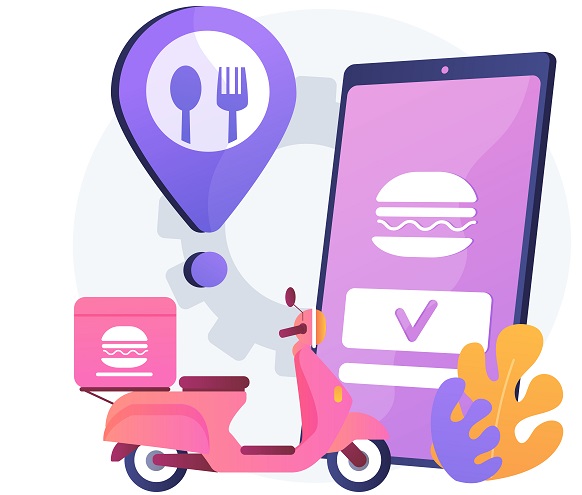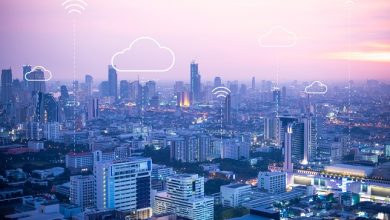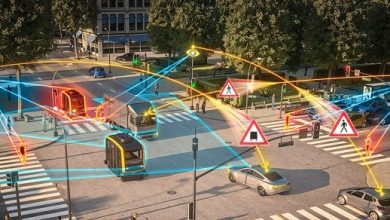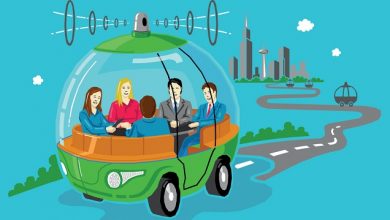Reimagining the future of food delivery with smart mobility

Earlier this year, to their surprise, select customers of a well-known pizza delivery company in Houston had their order delivered via robot delivery cars. Customers were invited to choose this unique delivery option backed by text updates and a numeric code which was provided to retrieve their order. Once the robot delivery car arrived, the customers simply entered the numeric code using the bot’s touchscreen and were ‘handed over’ their delivery fresh from the oven. Talk about re-imagining the future!
As we slowly move to stay-at-home and work-from-anywhere set-ups, one of the first industries to undergo a complete transformation is the food delivery service. Globally, the online food delivery market is worth over USD 107 billion according to Statista and is expected to keep growing at a fast pace. Worldwide, Asia stands out, holding 50% of the global market with India as the second largest region driving its growth. With social distancing norms well in place during the pandemic, more and more Indian food delivery firms are now focusing on ramping up their offerings with contactless orders and on-road delivery vehicles in an endeavour to protect their employees while also delivering on their customer promise.
Unfortunately, one of the key business determinants for food delivery companies will be to find customers that are looking for such services. For online food delivery apps and services, timely food delivery (simple as it may sound) involves complex algorithms with many factors such as the number of couriers, courier safety and access to vehicles – all factors outside the customers’ influence.
This is where smart mobility solutions, embedded location services and digital maps can support these organizations to gain a competitive edge. Let us put things in perspective and understand how food delivery owners could leverage these next-gen technological advancements promising to redefine customer service:
Optimal route planning and faster delivery
Faster deliveries mean more deliveries and a wider delivery area opens restaurants to new customers. Dedicated bike lanes and routing apps can empower delivery drivers, ensuring they do not take extra time to navigate or risk delays weaving through dense traffic. Additionally, having more docks and bike racks can let them lock up their bikes during deliveries so that they can feel safer leaving their modes of transport unattended in less familiar neighbourhoods.
Furthermore, artificial learning and geo-fencing can be leveraged to study trends across cities to assess high-demand pockets and peak-time slots for planning. Such data can be used by delivery and mobility companies to strategically place transport options with utmost efficiency. Technology-powered food kitchens and delivery services can leverage huge amounts of data to assess demand, supply and road closures and offer customised routing to better minimise time and travel between locations, thus ensuring faster and efficient customer services with effective cost controls for food delivery businesses.
Better business efficiency
Due to the pandemic, cloud kitchens have taken the industry by storm in terms of customer demand, potential market size and innovation. Real-time geofencing, real-time traffic monitoring, native apps, and in-vehicle dashboards, all built with location-centric software development kits (SDKs) can provide drivers with precise map data, turn-by-turn navigation, and the ability to alter plans on the fly. Alternatively, these solutions can also help food delivery fleets to predict on many parameters such as customer buying patterns, cancellation rates, demand ratios, food supply and availability of delivery drivers. This can also help restaurants and food delivery services save money by eliminating their need for front-of-house staff and amenities. In an industry that is fiercely competitive, smart mobility can help reduce overhead costs and increase profits.
Tackle food wastage
Another important challenge that smart mobility can help the food delivery industry address is the challenge of food wastage. For example, last year, in the UK alone, more than 16,000 litres of milk were dumped due to blockages in the supply chain and a lack of consumer access. Location-embedded apps and in-vehicle dashboards with advanced algorithms can enable new delivery models by helping companies mobilize employees on the ground, plan the most efficient multi-stop deliveries and therefore by extension, help reduce food wastage by facilitating customers’ access to cooked meals, wholesale food items and groceries.
Smart mobility is already playing a huge role in people’s lives: with apps for ridesharing, one-click travel book-and-pay, and real-time public transport data. In the future, smart mobility will enable seamless integration of all food delivery as well, including on-demand, connected vehicle options and ancillary services which were traditionally not a part of the food delivery experience. Now, the only question remains: What are you planning to have for dinner?
Author :

Abhijit Sengupta
Director and Head of Business India
SAARC region & Southeast Asia
HERE Technologies
Published in Telematics Wire





